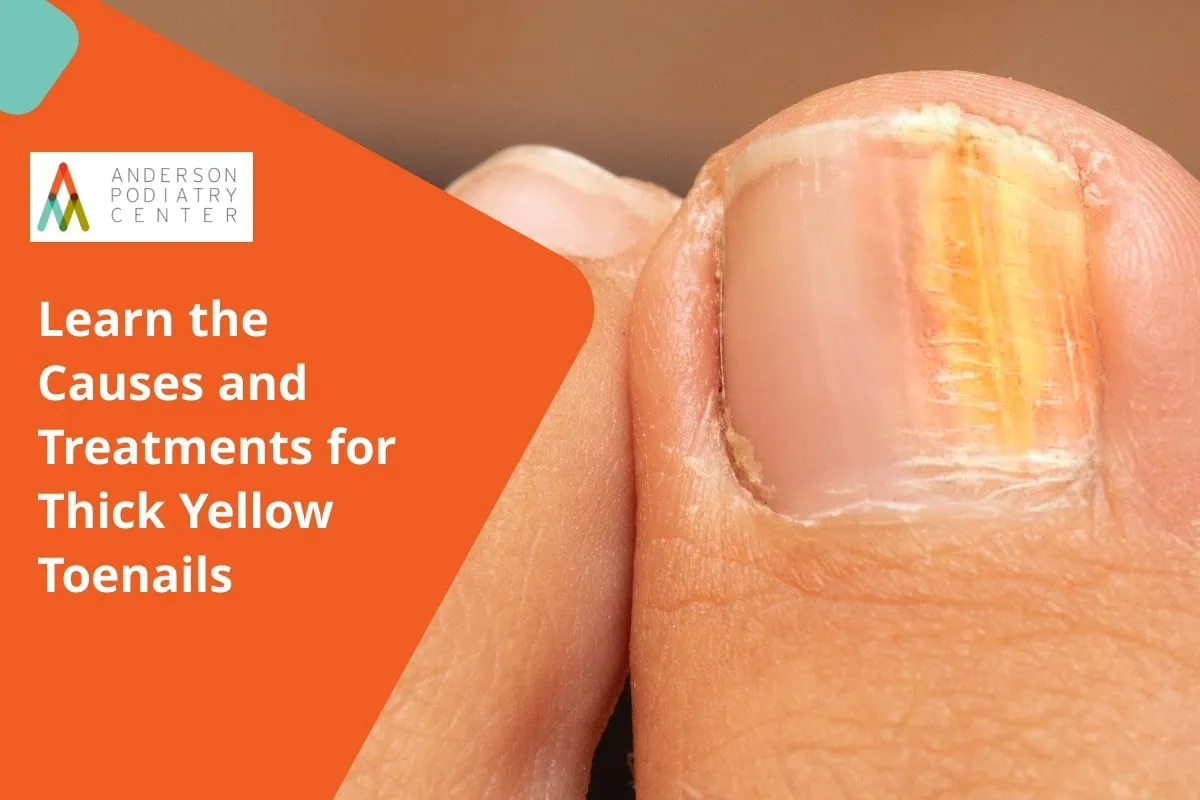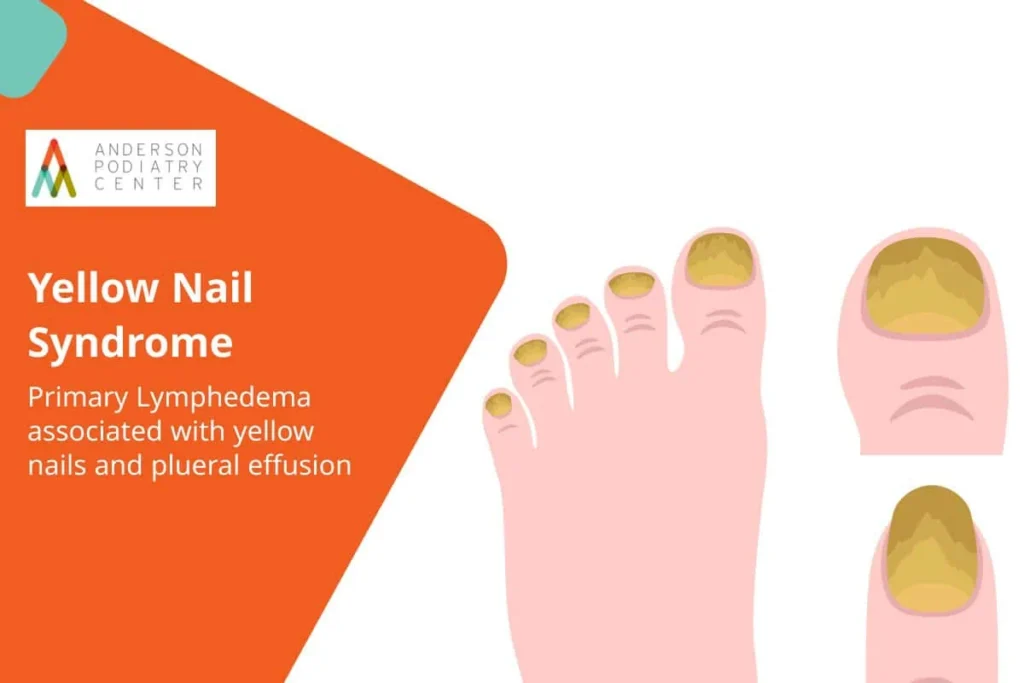
Thick yellow toenails can be more than just a cosmetic issue — they often signal an underlying problem that requires attention. Whether it’s caused by a fungal nail infection or another condition, yellow toenails should never be ignored. In this blog, we’ll cover the common causes, prevention strategies, treatment options, and home remedies, including how products like tea tree oil can play a role. If you or someone you know struggles with thick, discolored toenails, this guide is for you.
What Causes Thick Yellow Toenails?
Several factors can lead to the development of thick, yellow toenails, but the most common cause is toenail fungus. Fungi thrive in warm, moist environments, making feet the perfect breeding ground, especially when you wear shoes for extended periods or walk barefoot in public places like locker rooms. Other causes include:
- Yellow nail syndrome, a rare disorder associated with respiratory problems and swelling.
- Psoriasis or other skin conditions affecting the nail bed.
- Aging, where nails naturally thicken and discolor over time.
- Compromised immune system function, making it easier for infections to take hold.
Regardless of the cause, noticing an infected toenail early can make treating toenail conditions much easier.
Recognizing Symptoms of Nail Fungus
How can you tell if your thick, yellow nail is due to nail fungus? Watch for these signs:
- Nail thickening
- Nail distortion or shape changes
- Brittleness and crumbling edges
- Detachment of the nail from the nail bed
- Odor from the infected toenail
Early identification is crucial because once the infection spreads, it becomes harder to treat.

Why Yellow Toenails Shouldn’t Be Ignored
Besides being unsightly, yellow toenails can cause discomfort and lead to more serious complications. An untreated fungal nail infection can spread to other nails or even the skin, creating secondary infections. For those with diabetes or compromised immunity, even minor nail issues can escalate quickly.
Risk Factors for Developing Nail Fungus
Several behaviors and conditions increase the risk of developing toenail fungus, including:
- Walking barefoot in communal areas like pools or gyms
- Frequenting locker rooms without proper foot protection
- Wearing tight or non-breathable shoes
- Having a weakened immune system
- History of athlete’s foot or other fungal infections
Understanding these risk factors can help you craft a more effective treatment plan and avoid future infections.
Treatment Options for Thick Yellow Toenails
There are several treatment options available for treating toenail fungus, ranging from medical therapies to home remedies.
Topical Treatments
Topical treatments include antifungal creams, gels, and medicated nail lacquers. They are often the first line of defense for mild to moderate infections. These treatments need to penetrate the nail to reach the fungus on the nail bed, which can be challenging. Proper nail care, such as trimming the infected portion with a clean nail clipper, improves effectiveness.
Oral Antifungal Medications
For severe infections, doctors may prescribe oral antifungal drugs. These medications are more effective but can carry side effects, so they are usually reserved for stubborn or widespread infections.
Home Remedies
Some people prefer home remedies for mild fungal infections. Tea tree oil is one of the most popular natural treatments. This essential oil has antifungal and antiseptic properties. To use, apply a few drops directly to the infected toenail twice daily after cleaning the area. Consistent use over several weeks is necessary to see results.
Other home remedies include:
- Vinegar foot soaks
- Applying coconut oil, which has antifungal compounds
- Baking soda paste to reduce moisture buildup
While home remedies may help early on, advanced infections typically require medical intervention.
Laser Nail Treatment: How it works and how this may be the answer to your icky looking toenails.
For close to two decades, we have had great success using laser to greatly improve and eliminate yellow thickened toenails. Our Pin-Point Laser System for treatment of toenail fungus, pulses laser energy into the nerve creating heat which destroys the fungus. We also incorporate a specialized grinding system to thin the nails if they are thick to allow for better laser penetration. With very few exceptions, people see improvement when all other options fail.
Yellow Nail Syndrome: A Different Problem
If multiple nails are turning yellow, thickening, and growing slowly, and if you’re also experiencing respiratory issues or swelling, it could indicate yellow nail syndrome. This rare condition involves more than just a fungal nail infection and requires a doctor’s evaluation for proper diagnosis and treatment.
Preventing Thick Yellow Toenails
An ounce of prevention is worth a pound of cure. Here’s how to avoid infected toenails and maintain healthy nails:
- Always wear shoes in public areas, especially locker rooms.
- Keep your feet clean and dry.
- Use a clean nail clipper regularly to trim nails straight across.
- Avoid sharing nail tools with others.
- Choose breathable footwear and moisture-wicking socks.
- Apply antifungal powders if you’re prone to sweaty feet.
- Let your nails “breathe” by limiting nail polish use, especially if you’re prone to toenail fungus.
Good hygiene and foot care habits can drastically reduce the chance of developing yellow, thickened nails.
How Nail Polish Can Contribute to the Problem
While nail polish can mask discolored toenails, it can also worsen fungal infections by trapping moisture against the nail, creating an ideal environment for fungi to thrive. If you suspect you have toenail fungus, it’s best to avoid nail polish until the infection is fully cleared.
If you must use polish, consider antifungal nail polish brands designed specifically for people prone to fungal infections.
Crafting a Personalized Treatment Plan
Everyone’s situation is unique, so it’s important to create a customized treatment plan based on the severity of your infection, overall health, and lifestyle. A typical plan might include:
- Regular trimming of thickened nails with a nail clipper
- Daily application of topical treatments like antifungal creams or tea tree oil
- Oral medications for stubborn cases
- Lifestyle changes to prevent recurrence
- Professional evaluation if yellow nail syndrome is suspected
Following a treatment plan consistently over several months is often required to fully eradicate toenail fungus and restore the appearance of your nails.
Final Thoughts
Thick yellow toenails are a common but treatable condition. It is fine to explore home remedies like tea tree oils, but do not hesitate to see professional medical care if needed. Any form of topical treatment has limited effect due to problems with the absorption into the nail. Treatment with oral medication can be risky to your liver health. If you have never considered laser toenail treatment, now may be a good time to do so. Our experience and feedback from our patients tell us that it is the most successful treatment choice.
Watch Our Laser Treatment Patient Testimonial Videos for Thick Yellow Toenails
Schedule Your Appointment For Treatment Of Thick Yellow Toenails Today
Call us today at our Fort Collins location (970) 329-8158, Broomfield location (303) 997-2795, Surgery Center (970) 329-8158, or use our online scheduling system to book your appointment.


